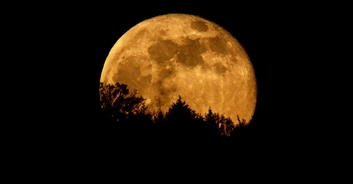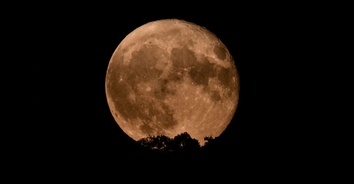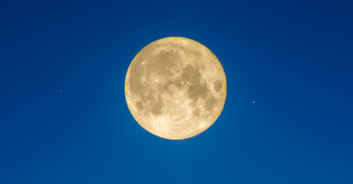Tonight (April 7-8), the night sky will be illuminated by the biggest and brightest full moon of 2020.
Tuesday's supermoon - formerly known as a perigean full moon - will be the third month in a row for the spectacular celestial event, occurring when the full moon is at its closest point to Earth in its monthly orbit.
Relive the moment Buzz Aldrin planted the US flag on the moon:On the evening of April 7 and early hours of April 8, the moon will be as close as 356,907 kilometers (221,772 miles) to Earth, making it appear much larger and bright in the night's sky. This is actually the result of an optical illusion that makes the moon appear much bigger due to its relative size to objects and buildings on the horizon.
The name 'Pink moon' comes from folklore, as the supermoon coincides with spring flower blossoms this time of year.
As many of us are stuck in our homes right now, it'll certainly be worth stepping out into the backyard and catching a glimpse of this remarkable celestial occasion. The best date and time to catch April's pink supermoon is at moonrise (14:08 EDT/18:08 GMT) on Tuesday and at moonset on Wednesday, when it is closest to the horizon.
Per The Independent, the term "supermoon" was first coined by astrologer Richard Nolle back in 1979, who defined a supermoon as any full moon that was within 90% of its closest approach to Earth.
EarthSky contributor and astronomer Bruce McClure recently wrote about how the term "supermoon" may be criticized by some astronomers, but it has also helped increase interest in astronomy in others. He said:
"Some astronomers complain about the name supermoon. They like to call supermoons hype. But supermoons aren’t hype. They’re special. Many people now know and use the word supermoon. We notice even some diehards are starting to use it now... No doubt about it. Supermoon is a catchier term than perigean full moon."
McClure added that the most distant and smallest full moon of the year - sometimes called a micromoon - will occur on October 31, 2020. This will be 406,166 kilometers (252,380 miles) away - an astounding 49,131 kilometers farther away than tonight's supermoon!
McClure also notes that tonight's supermoon will be accompanied by extra gravitational pull, resulting in extra-high tides.




